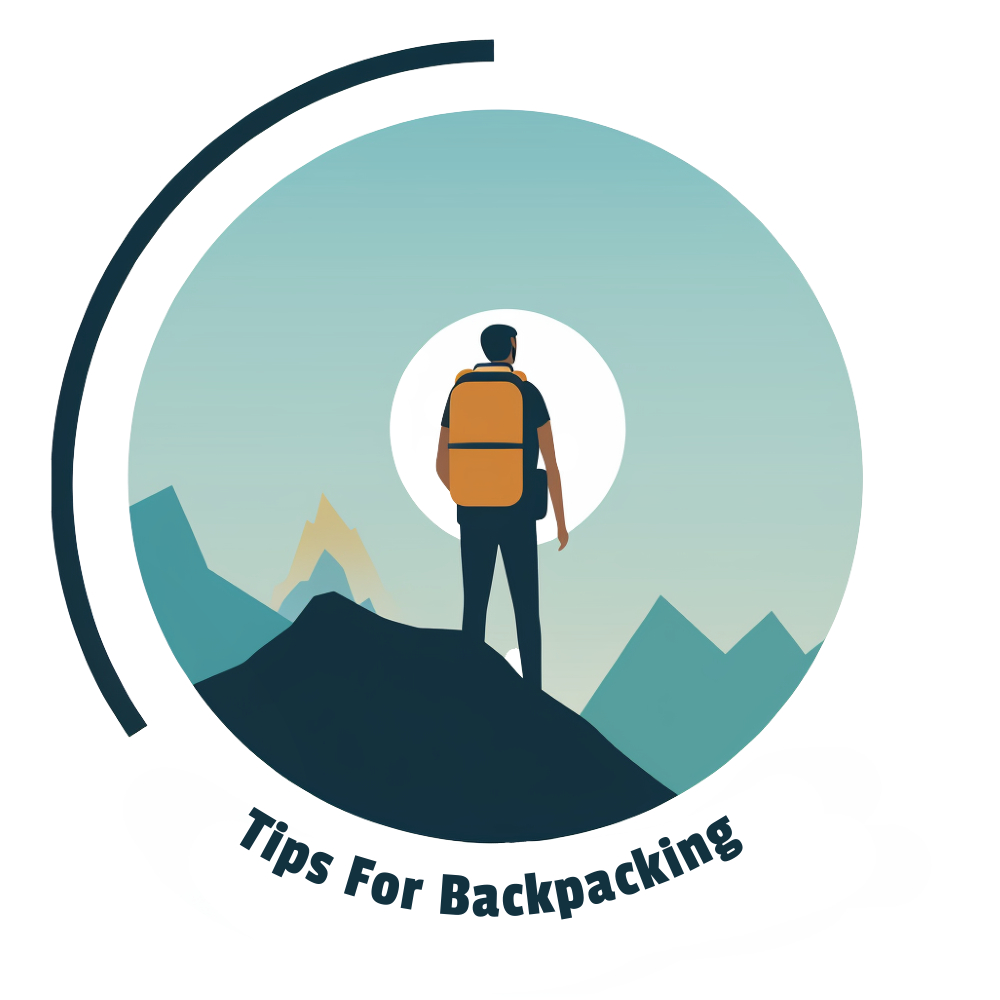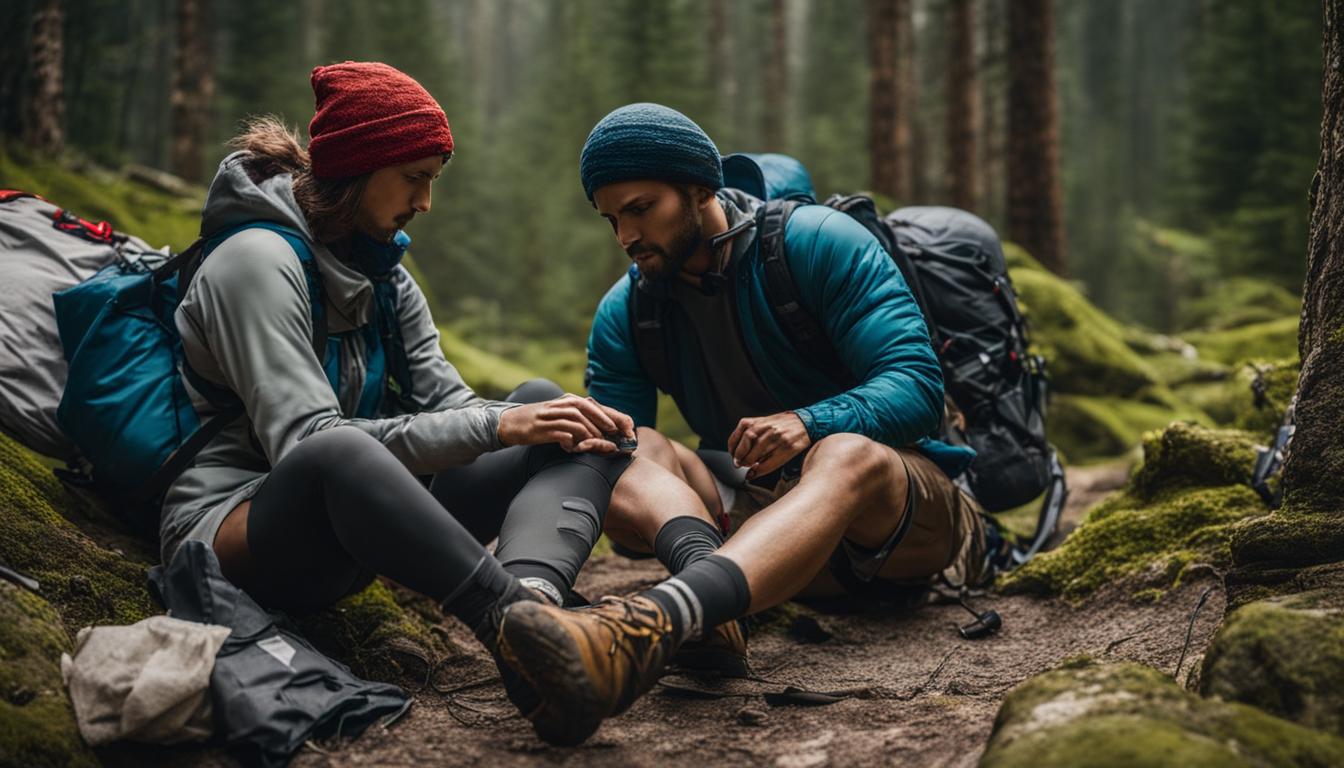Hey there, fellow outdoor enthusiasts! Today, I want to talk about something that every backpacker should have in their toolkit – wilderness first aid skills. Whether you’re embarking on a short weekend hike or a long-distance backpacking adventure, knowing how to handle medical emergencies in remote environments is crucial. So, let’s dive in and explore the basics of wilderness first aid!
Course Outline and Overview
Are you planning to venture into the great outdoors? As an avid backpacker or outdoor enthusiast, it’s essential to equip yourself with basic wilderness first aid skills. In this section, I will provide an overview of the wilderness first aid course and its curriculum, giving you a glimpse into the topics covered and the knowledge you’ll gain.
The wilderness first aid course is designed to prepare individuals like you to handle medical emergencies in remote outdoor environments. It typically lasts 16 hours and is suitable for anyone aged 16 and above. During the course, you will learn the Patient Assessment System, which is a systematic approach to evaluating and treating injured or ill individuals. This system ensures that you are able to provide prompt and effective care in various outdoor scenarios.
Throughout the course, you will cover a wide range of topics that are essential for wilderness first aid. These include primary and secondary assessments, head, neck, and spinal injuries, heat-related emergencies, hypothermia, altitude-related illnesses, allergies and anaphylaxis, burns, bone and joint injuries, and wound care. By the end of the course, you will have a solid understanding of these topics and be equipped with the skills to address them in real-life situations.
To ensure that you receive a comprehensive and standardized education, the wilderness first aid course curriculum is based on the Boy Scouts of America Wilderness First Aid Curriculum and Doctrine Guidelines. It aligns with OSHA’s Best Practices for Workplace First Aid Training Programs, ensuring that you are learning from industry-recommended guidelines and practices.
Upon completion of the course, you will receive a digital certificate that is valid for two years. This certification serves as a testament to your knowledge and skills in wilderness first aid, giving you the confidence to tackle any medical emergency that may arise during your outdoor adventures.
| Topics Covered | Duration |
|---|---|
| Primary and secondary assessments | 2 hours |
| Head, neck, and spinal injuries | 1 hour |
| Heat-related emergencies | 1 hour |
| Hypothermia | 1 hour |
| Altitude-related illnesses | 1 hour |
| Allergies and anaphylaxis | 1 hour |
| Burns | 1 hour |
| Bone and joint injuries | 1 hour |
| Wound care | 2 hours |
Importance of Wilderness First Aid
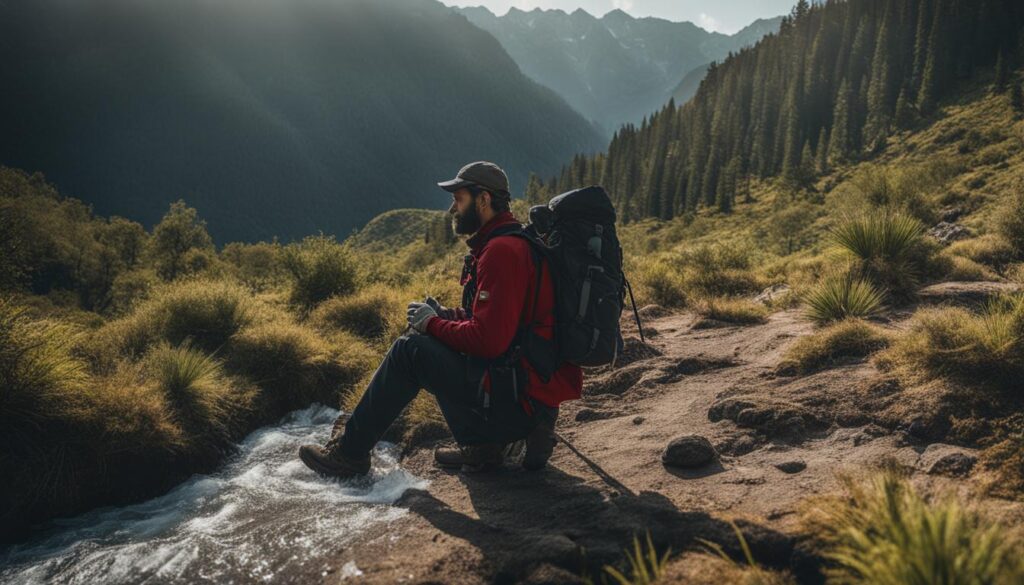
Managing emergencies in the outdoors requires a unique set of skills and knowledge. That’s where wilderness first aid comes in. This invaluable training equips individuals with the ability to provide immediate and effective care in remote outdoor settings when professional help may be hours away. Wilderness first aid is not just important for backcountry adventures; it is also crucial in urban areas during natural disasters and mass casualty events.
When it comes to emergencies, time is of the essence. Wilderness first aid allows individuals to recognize and respond to illnesses and injuries promptly, potentially saving lives. Whether it’s a sprained ankle, an allergic reaction, or even a serious fracture, having the skills to assess and treat these conditions can make a significant difference in the outcome of an emergency situation.
“Wilderness first aid plays a crucial role in preparing individuals to address medical issues that may arise in remote outdoor settings.”
Not only does wilderness first aid provide the knowledge and skills to handle emergencies effectively, but it also empowers individuals to make better evacuation decisions. In scenarios where access to professional medical help is limited, knowing when to evacuate and how to do it safely can be a life-saving skill. Wilderness first aid training covers topics such as patient assessment, treatment of common outdoor injuries and illnesses, and evacuation protocols, ensuring individuals are well-prepared for real-life emergencies in various weather conditions.
| Benefits of Wilderness First Aid | Why Your Outdoor Adventures |
|---|---|
| 1. Prompt and effective care | 1. Ensures safety in remote locations |
| 2. Better evacuation decision-making | 2. Provides peace of mind |
| 3. Saves lives in emergency situations | 3. Enables self-reliance and confidence |
In conclusion, wilderness first aid is not just a nice skill to have; it is essential for anyone venturing into the great outdoors. By equipping individuals with the knowledge and skills to manage emergencies, wilderness first aid training ensures a safer and more enjoyable outdoor experience. So, before your next adventure, make sure you invest in wilderness first aid training and be prepared for whatever nature throws your way.
Wilderness First Aid Certification
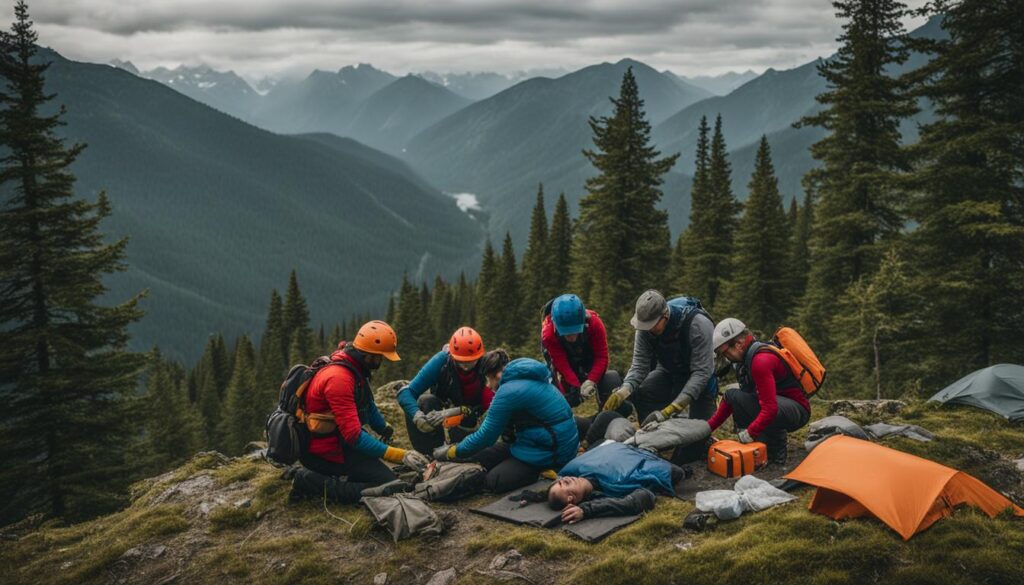
Obtaining wilderness first aid certification is essential for individuals who plan to engage in outdoor activities and adventures. By completing a 16-hour wilderness first aid course, participants gain the necessary skills and knowledge to effectively respond to medical emergencies in remote environments. The Boy Scouts of America (BSA) has specific requirements for wilderness first aid certification, making it a valuable credential for Scouts and Scout leaders.
BSA-approved providers offer wilderness first aid training that aligns with the BSA curriculum. These providers, such as the American Red Cross and the Emergency Care & Safety Institute, offer courses that meet the BSA’s requirements for wilderness first aid training. It is crucial to choose a reputable provider and ensure that the course is recognized by the BSA. Upon successful completion of the course, participants receive a certificate that is valid for two years.
Table: BSA-Approved Wilderness First Aid Providers
| Provider | Website |
|---|---|
| American Red Cross | www.redcross.org |
| Emergency Care & Safety Institute | www.ecsinstitute.org |
| Wilderness Medical Associates | www.wildmed.com |
It is important to note that wilderness first aid certification is not only beneficial for Scouts and Scout leaders. It is a valuable skill for anyone who enjoys outdoor activities, as it equips individuals with the ability to provide immediate care when professional medical help is not readily available. Whether you are planning a backpacking trip, a camping adventure, or simply spending time in nature, wilderness first aid certification ensures that you are prepared to handle emergencies and potentially save lives.
Wilderness First Aid for High Adventure Programs
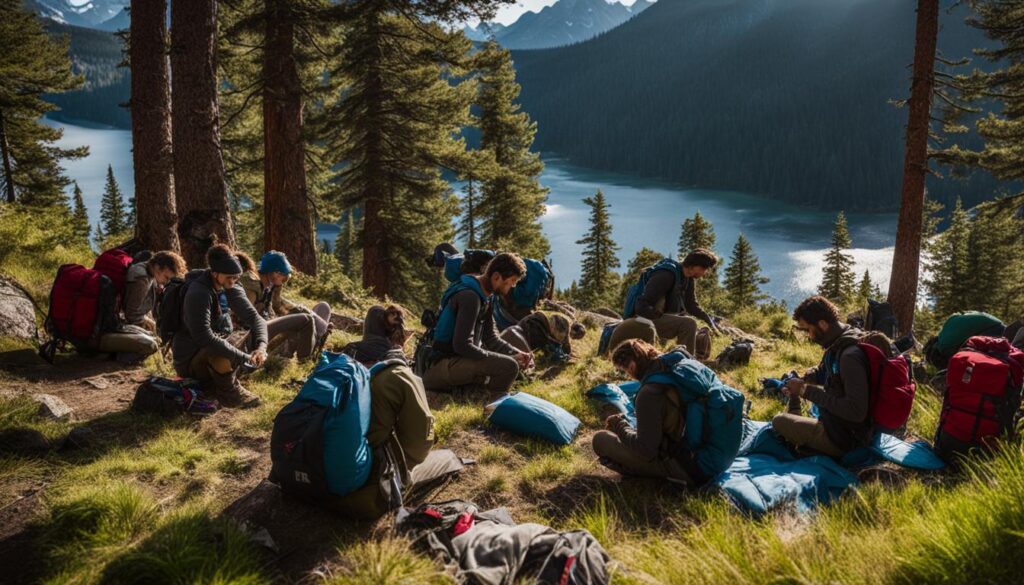
When it comes to participating in high adventure programs, wilderness first aid is an essential skill that can make a significant difference in the safety and well-being of individuals. These programs, offered by BSA high-adventure bases and other councils, involve activities in remote and challenging environments where professional medical help may not be readily available. Being trained in wilderness first aid equips participants with the knowledge and confidence to handle medical emergencies effectively.
The BSA requires at least one person per trek to have current wilderness first aid certification, and some bases, such as Philmont Scout Ranch, even require two certified individuals per trek. This requirement emphasizes the importance of preparedness and ensures that there is always someone capable of providing immediate care in case of an emergency. Other councils offering high-adventure programs also encourage wilderness first aid training to enhance the safety and preparedness of participants.
To meet these requirements, individuals can find wilderness first aid classes through various organizations, including the American Red Cross and the Emergency Care & Safety Institute. It is advisable to check with the local BSA council or the specific high adventure program being attended for a list of approved providers. Additionally, online resources and directories can assist in finding reputable wilderness first aid classes available in the area.
The Importance of Wilderness First Aid for High Adventure Programs:
- Ensures preparedness and safety in remote and challenging environments
- Allows for immediate and effective response to medical emergencies
- Meets the certification requirements of BSA high-adventure bases
- Enhances the overall preparedness and well-being of participants
By prioritizing wilderness first aid training for high adventure programs, participants can embark on their outdoor adventures with the peace of mind that comes from being prepared to handle any medical situation that may arise. This valuable skill ensures the safety and well-being of individuals in remote and challenging environments, allowing them to fully enjoy their high adventure experiences.
Wilderness First Aid Curriculum
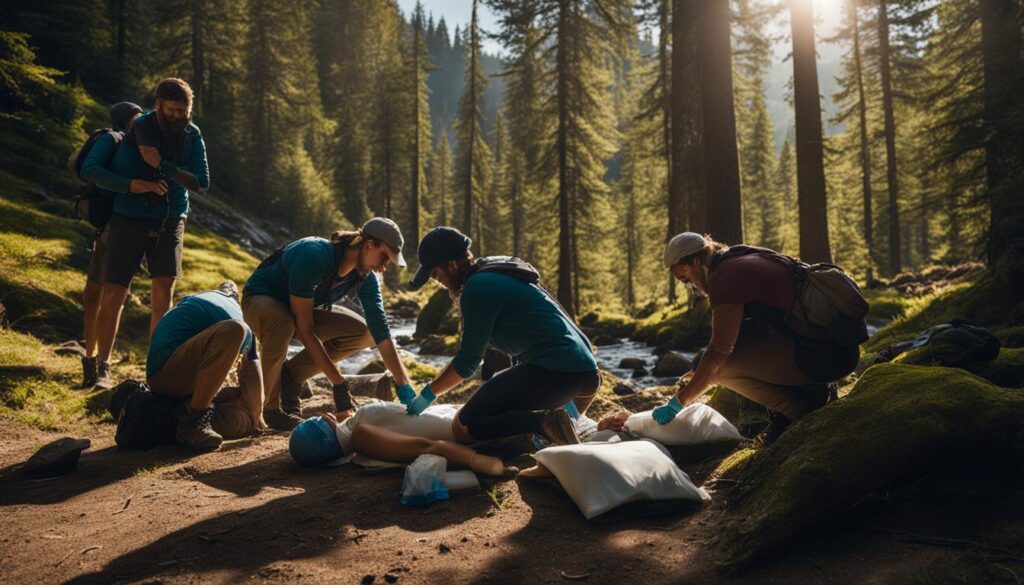
The Boy Scouts of America (BSA) offers a comprehensive wilderness first aid curriculum designed to equip participants with the necessary skills to handle medical emergencies in remote outdoor settings. The curriculum is carefully crafted to cover a wide range of medical topics, ensuring individuals are prepared to respond effectively in wilderness environments. The course modules provide a holistic approach to training, focusing on both classroom instruction and practical scenarios to reinforce learning.
The BSA wilderness first aid curriculum aligns with the Wilderness First Aid Curriculum and Doctrine Guidelines of the Boy Scouts of America. It covers essential topics such as primary and secondary assessments, head, neck, and spinal injuries, heat-related emergencies, hypothermia, altitude-related illnesses, allergies and anaphylaxis, burns, bone and joint injuries, and wound care. By immersing participants in real-life scenarios, the curriculum enables them to apply their knowledge and skills in controlled settings, preparing them for emergencies they may encounter in the wilderness.
Curriculum Overview:
- Primary and Secondary Assessments
- Head, Neck, and Spinal Injuries
- Heat-Related Emergencies
- Hypothermia
- Altitude-Related Illnesses
- Allergies and Anaphylaxis
- Burns
- Bone and Joint Injuries
- Wound Care
Upon successful completion of the wilderness first aid course, participants receive a digital certificate that is valid for two years. This certification not only serves as a testament to an individual’s proficiency in wilderness first aid but also ensures they meet the requirements of the Boy Scouts of America for high adventure treks and programs.
Finding a Wilderness First Aid Class
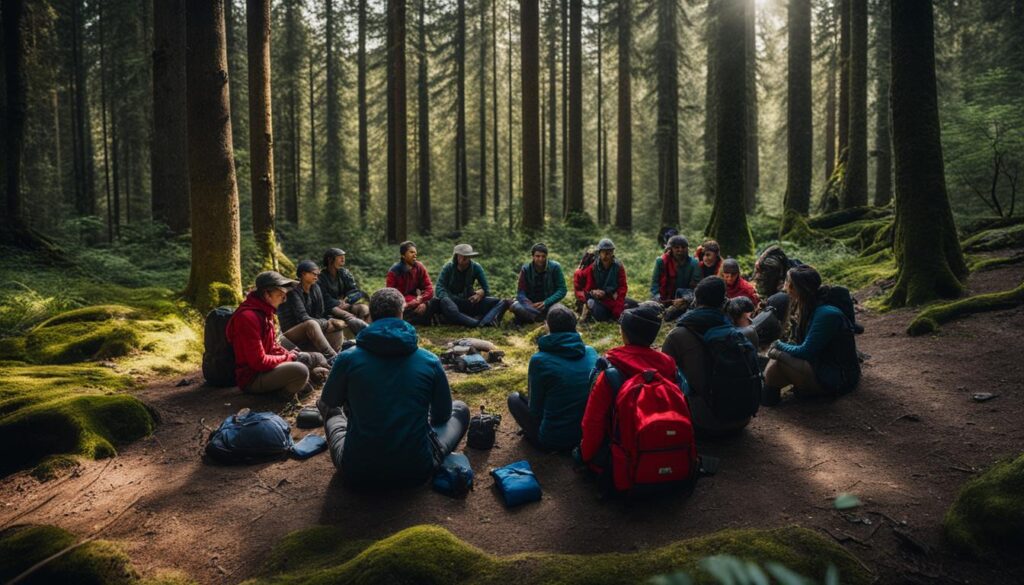
To prepare for your next wilderness adventure, it is important to find a wilderness first aid class near you. Various organizations and providers offer wilderness first aid courses, including the American Red Cross and the Emergency Care & Safety Institute. Contact your local BSA council or the high adventure program you will be attending for a list of approved providers. Additionally, online resources and directories can assist in finding reputable wilderness first aid classes in your area.
Why Take a Wilderness First Aid Class?
Taking a wilderness first aid class provides you with the skills and knowledge necessary to handle medical emergencies in remote environments. It equips you with the confidence to assess and treat injuries, make evacuation decisions, and ensure the safety of yourself and others. From basic wound care to managing heat-related emergencies and allergic reactions, a wilderness first aid class covers a wide range of topics that are crucial for outdoor enthusiasts.
“Getting trained in wilderness first aid can make a significant difference in the outcome of an emergency situation. It empowers you to provide prompt and effective care when professional help is not readily available.”
How to Find the Right Class
When searching for a wilderness first aid class, consider the following factors:
- Location: Look for classes that are convenient and accessible for you. Consider both in-person and online options.
- Provider Reputation: Choose a reputable provider with experienced instructors who have real-world wilderness medical experience.
- Curriculum: Review the course outline to ensure it covers the essential topics you wish to learn.
- Certification: Check if the class provides a recognized certification valid for a designated period.
By taking the time to carefully select the right wilderness first aid class, you can ensure that you receive the best training and preparation for your outdoor adventures.
Conclusion
Wilderness first aid is a valuable skill for individuals engaging in outdoor activities and adventures. By completing a wilderness first aid course, participants gain the knowledge and confidence to address medical emergencies in remote environments. From assessing and treating injuries to making appropriate evacuation decisions, wilderness first aid equips individuals with life-saving skills.
Stay prepared, stay safe, and enjoy your outdoor adventures with the peace of mind that comes from being trained in wilderness first aid.
Is Handling Emergencies in the Outdoors Different from Regular First Aid Skills for Backpackers?
When it comes to wilderness first aid emergencies, handling situations in the outdoors requires a different set of skills compared to regular first aid. Backpackers need to be prepared to deal with remote locations, limited resources, and potential delays in getting professional medical help.
FAQ
What is wilderness first aid?
Wilderness first aid is a crucial skill for anyone planning to spend time in remote outdoor environments. It involves providing prompt and effective care for medical emergencies when professional help may not be readily available.
How long does a wilderness first aid course typically last?
A wilderness first aid course typically lasts for 16 hours.
Who is eligible to take a wilderness first aid course?
Wilderness first aid courses are suitable for individuals aged 16 and above.
How much does a wilderness first aid course cost?
The tuition fees for a wilderness first aid course range from $215 to $380.
What topics are covered in a wilderness first aid course?
A wilderness first aid course covers topics such as primary and secondary assessments, head, neck, and spinal injuries, heat-related emergencies, hypothermia, altitude-related illnesses, allergies and anaphylaxis, burns, bone and joint injuries, and wound care.
How long is a wilderness first aid certificate valid?
Upon completion of the course, participants receive a digital certificate that is valid for two years.
Is wilderness first aid only relevant for backcountry adventures?
No, wilderness first aid is also relevant in urban areas during natural disasters and mass casualty events.
What are the requirements for wilderness first aid certification in the Boy Scouts of America (BSA)?
Youth aged 14 and above, as well as adult Scout leaders, are encouraged to complete a 16-hour wilderness first aid course based on the BSA curriculum. A current CPR/AED certificate is also required.
How many certified individuals are required for a trek at BSA high-adventure bases?
All four BSA high-adventure bases require at least one certified individual per trek, and Philmont Scout Ranch requires two.
Where can I find a wilderness first aid class near me?
Various organizations and providers, such as the American Red Cross and the Emergency Care & Safety Institute, offer wilderness first aid courses. Contact your local BSA council or the high adventure program you will be attending for a list of approved providers. Online resources and directories can also assist in finding reputable classes in your area.
